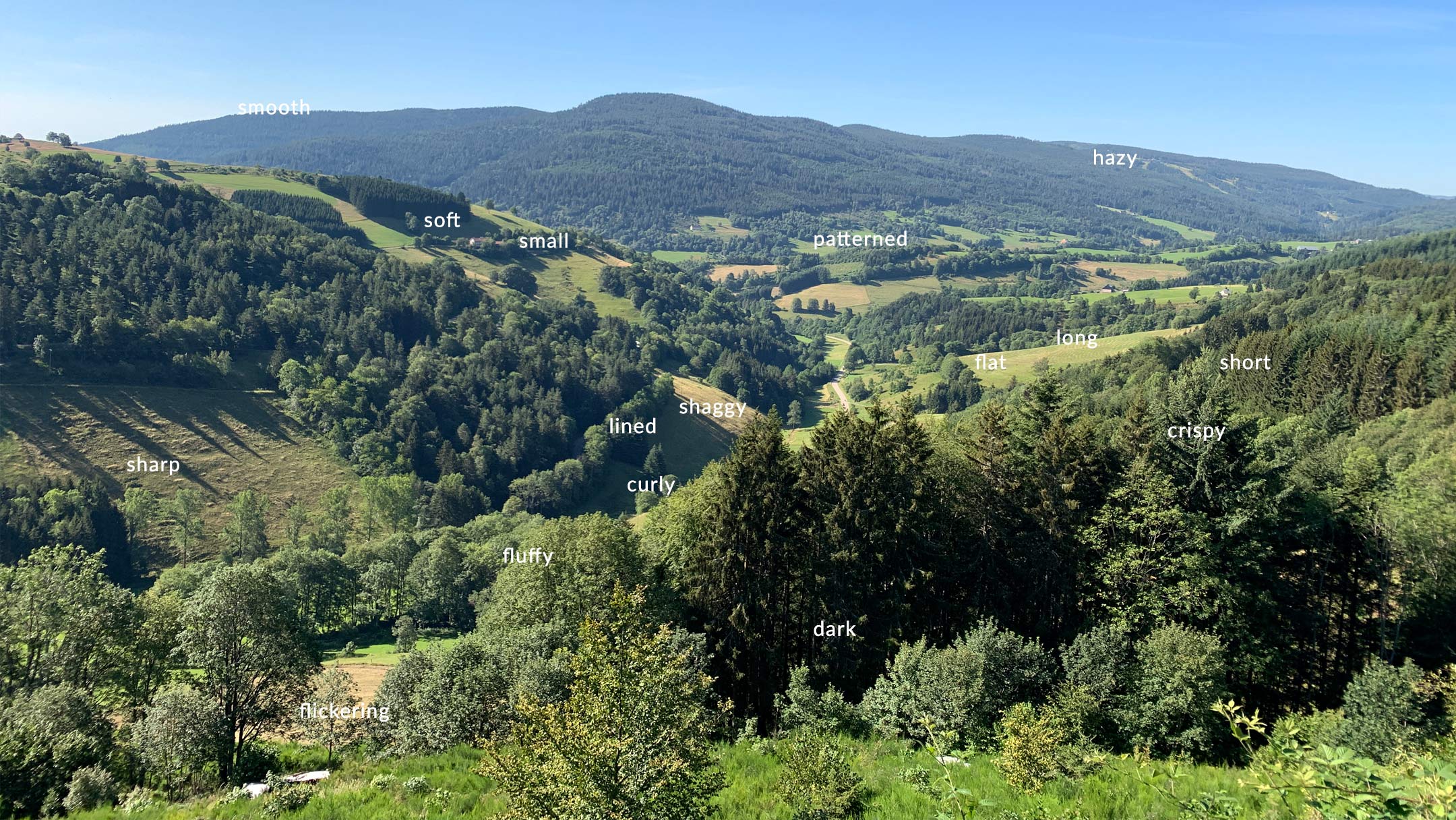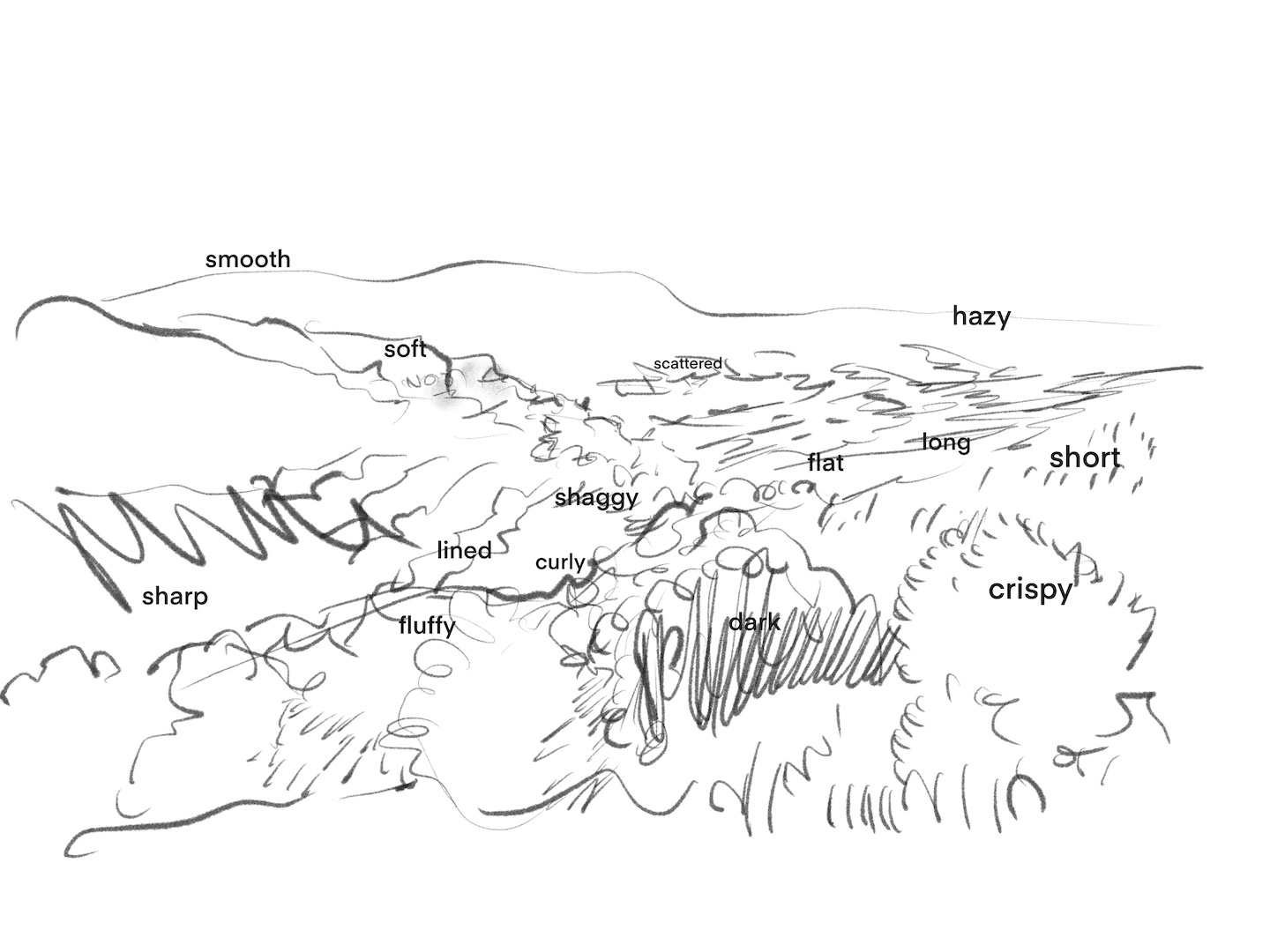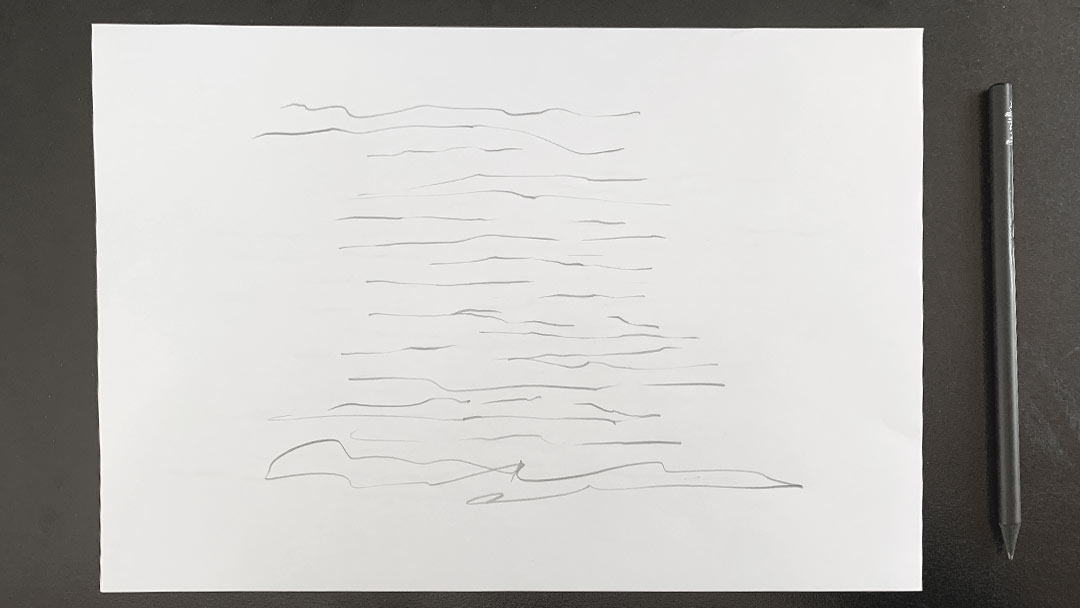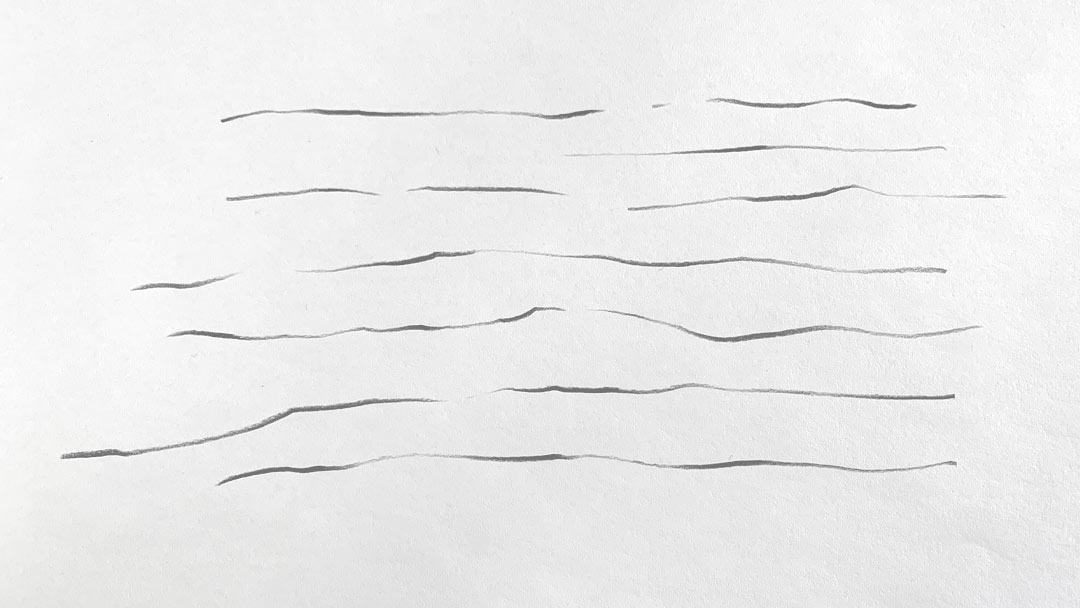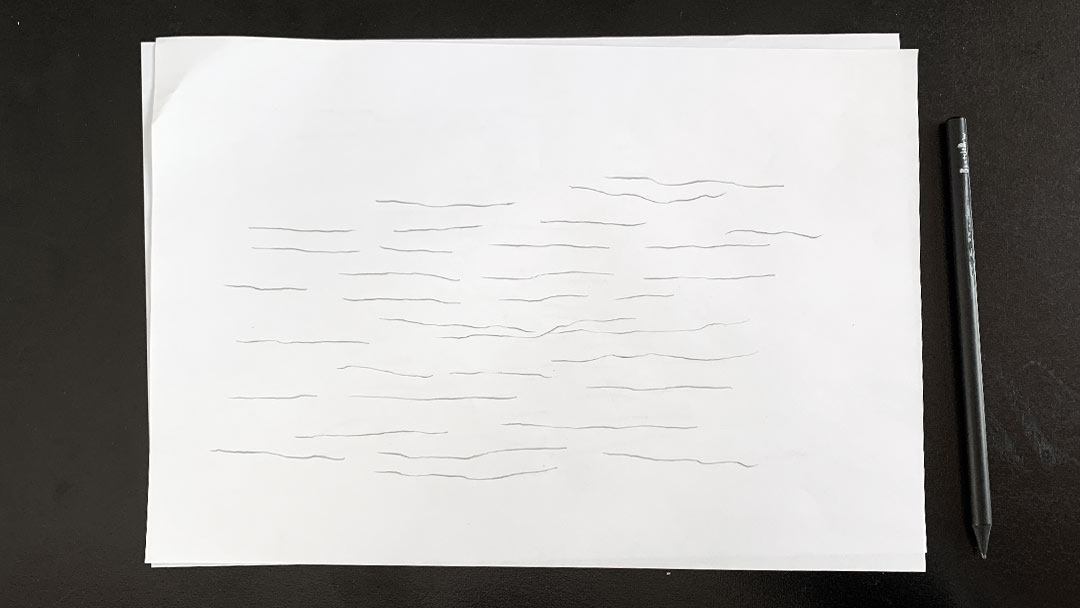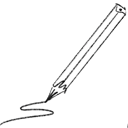Rule 1 | Let the line flutter
Lesson 1 | How to draw a line
30 min. |
The right material is crucial for the success of the sketches. A fluid stroke, a line of the appropriate width, whether digital or analogue, helps to give the right expression. There are suitable tools available and often these are suitable because they bring the right conciseness and the width of the stroke is in proportion to the drawing.
Step 1 | Watch precisely what you have to do with the pencil tip!
A video introduction to the most important thing: how to draw a line?
Watch the video and exercise. This exercise shall be repeated as much as possible.
Script
Hello and happy sketching!
Let’s start sketching. Actually, we start with the line. We start with how to draw a line.
Here I have a normal pencil of the grade HB. It is sharpened but not really ultimate sharp. We will see that we can do a lot with the width of the line, respectively with the width of the tool. Because the width of the line must always be chosen in relation to the sketch. Here an example: look at the presence of the image with a thick stroke … and with a thin stroke. This is absolutely something different.
Then a quick word about the paper. This is just an ordinary 80-gram piece of paper, as it is used in printers, or on drawing pads.
Whenever we sketch, we never sketch with a single sheet of paper on the table. The best surface for drawing is a bundle of paper. Every table surface has a texture, grain or is completely flat. Neither of these is suitable for us.
So now all is said and done. We can proceed. The shape-giving or the searching line should always be drawn only as fast as we master it.
I’ll do an analogy: you’ve probably seen children on the ski slope going down the mountain so fast that it makes us feel a little queasy watching. Although this usually works well with children. But there we clearly see that the speed is too fast and that the line can’t really be steered that way.
We lead the line deliberately, thoughtfully and agile. Agile is an important term. Because in the agility of the stroke, the observer recognizes the creator of the stroke. And it is precisely this human origin that fascinates us in the hand-drawn sketch. What could be more exciting than the human being for us humans? So, we exploit it and draw the line with great agility.
But agile is still an abstract term. What does it actually mean? It means being highly mobile, active and agile.
So, let’s take highly-mobile first. How much can we dare? I have now made some strokes here. All of them show flexibility. Some are perhaps too moved. It’s almost like a mannerist wiggle. Others are too straight. Or even boring. Yes, there are really boring strokes. I’ll try one here. Hm, not so easy for me. But maybe like this …
The term „alert“ for the stroke is exciting. Adapted by impulses, always different. Just not repetitive. Sometimes big and wide, sometimes calmer, sometimes almost shaky or annoyed. Just always in different excitement.
And still the third term „agile“. I describe it as „reacting quickly to appropriate handling due to special agility“. The nimble stroke thus constantly reacts to what is at hand. This can either be a cat, drawn while sitting, or an inner image of a bird, which we have to recall from memory. The movement of the hand must be constantly compared with the model. This is a quick back and forth. I feel this inner exchange between hand and head like a crossfire. But only in the first 20 seconds, because then it suddenly begins to take on a life of its own. We get into the flow: the creative flow. And this flow is then very calm and eternal.
This is exactly what you can practice while sketching. With the lessons and days, you will succeed better and better.
And of course, you are then in the flow as a whole person. That’s why it’s worth sketching ideas, because it tickles your brain and makes you creative.
By the way, this coming into the flow happens much, much easier on paper. Because on paper we can work directly connected – pen to the brain.
The reason why this is so important? We’ll get to that later.
Step 2 | To understand temperaments of lines
Look at this nice landscape with its different states of appearance. How can you name these? The step to finding a word sometimes helps to know how to draw a line. So take your time to observe the view.
Landscapes are like carpets of different lines
In the first step take the picture above and look at it carefully. Take your finger and slide over the landscape on your screen. Then stop and name at least 10 places in its properties.
In the second step you draw this landscape. But you do this in such a way that you only have your eyes on the original, i.e. the landscape. With your pencil you work blind on the paper. You try to do nothing else but imitate the lines of the landscape on your paper. There are long lines, dark lines, crispy lines…
Don’t pay attention to the accuracy. Your sketch should not look „right“ in the end either. Here it’s all about learning to draw the line in as many differences as possible.
You do this exercise only for yourself. It serves you as a training.
Step 3 | Watch the gallery below, then draw your lines like explained in the film!
(Assignment)
Take 4-6 sheets.
By the way, never be short with paper. Paper is cheap, so use it in heaps!
Draw your lines. Try out different pencils. Start with HB and go to 6B. You can even try out all kind of different pens.
15 min.
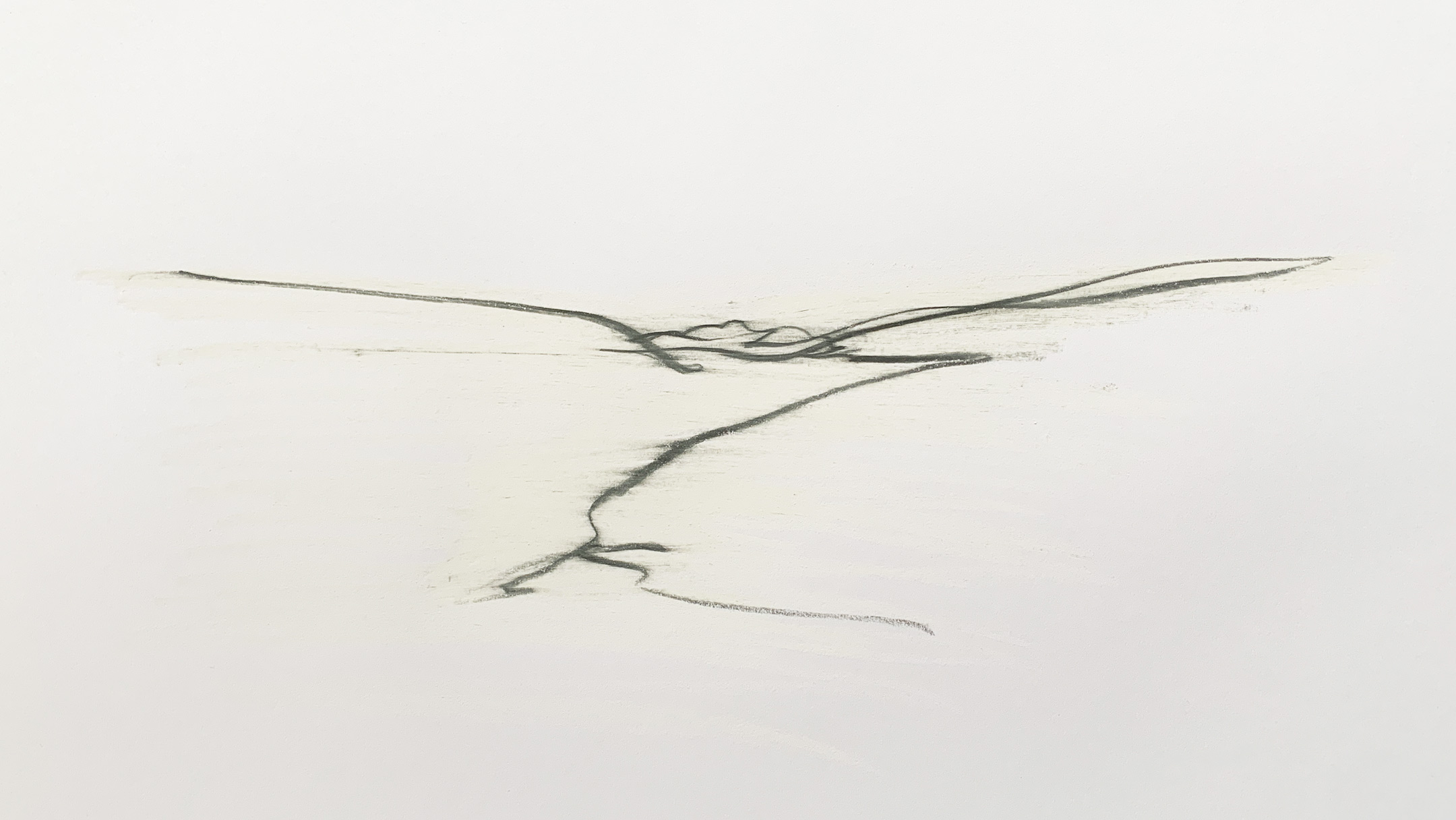
Even a few fluttering lines may look like a landscape.
ASSIGNMENT | Make your assignment sheet with as many as possible fluttering lines and upload it.
To upload, use the buttons further down.
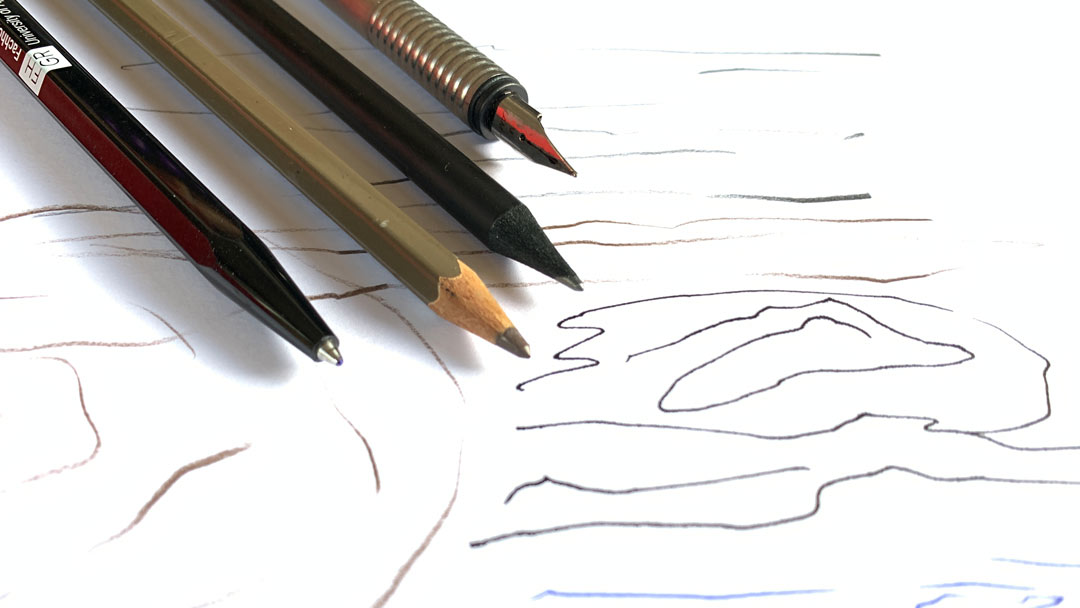
Free trial
Try one lesson and decide if you want to do the whole course. Click for the free trial ...
Certificate
If you want to achieve a certificate that proves your sketching skills, get all your information here ...

